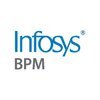

Parul University




10+ Parul University Accountant Interview Questions and Answers
Q1. What is the full form of ITC in the context of indirect tax?
Input Tax Credit
ITC stands for Input Tax Credit in the context of indirect tax
It allows businesses to reduce the tax they have already paid on inputs from the tax they have to pay on outputs
Example: If a business pays GST on raw materials, they can claim ITC to reduce the GST they owe on their final product

Q2. How many Returns are required for Goods and Services Tax (GST) and what are the filing dates?
For GST, there are multiple returns required with different filing dates.
There are different types of GST returns such as GSTR-1, GSTR-3B, GSTR-4, etc.
The filing dates for these returns vary based on the type of return and the turnover of the taxpayer.
For example, GSTR-1 for monthly filers is due on the 10th of the following month, while GSTR-3B is due on the 20th of the following month.
Taxpayers with turnover above a certain threshold also need to file an annual return calle...read more

Q3. What are the different types of taxes in India?
There are various types of taxes in India including income tax, goods and services tax (GST), corporate tax, customs duty, and excise duty.
Income Tax: Tax levied on the income of individuals and businesses.
Goods and Services Tax (GST): Indirect tax levied on the supply of goods and services.
Corporate Tax: Tax levied on the income of companies.
Customs Duty: Tax imposed on goods imported into or exported out of the country.
Excise Duty: Tax levied on the production or sale of go...read more

Q4. What is payroll, and what are its key components?
Payroll is the process of calculating and distributing wages to employees.
Calculating employee wages based on hours worked or salary
Deducting taxes and other withholdings
Issuing paychecks or direct deposits
Maintaining accurate records of employee compensation
Key components include gross pay, deductions, net pay, and payroll taxes

Q5. What is the process of bank reconciliation?
Bank reconciliation is the process of comparing and matching the balances in a company's accounting records with the balances on its bank statement.
Gather bank statements and accounting records
Compare deposits and withdrawals between the two
Identify and investigate any discrepancies
Adjust the accounting records to match the bank statement
Prepare reconciliation report

Q6. What is the meaning of finance?
Finance refers to the management of money and other assets, including investing, borrowing, budgeting, and forecasting.
Finance involves managing money and assets to achieve financial goals.
It includes activities such as investing, borrowing, budgeting, and forecasting.
Finance is essential for individuals, businesses, and governments to make informed financial decisions.
Examples of finance include budgeting for personal expenses, investing in stocks, and securing loans for bus...read more

Q7. What is a direct tax?
A direct tax is a tax that is paid directly by an individual or organization to the government.
Direct taxes are imposed on income, profits, assets, and wealth.
Examples of direct taxes include income tax, corporate tax, property tax, and inheritance tax.
Direct taxes are typically progressive, meaning that the tax rate increases as the taxable amount increases.

Q8. What is an indirect tax?
An indirect tax is a tax that is imposed on goods and services rather than on income or profits.
Indirect taxes are usually passed on to the consumer through higher prices.
Examples of indirect taxes include sales tax, value-added tax (VAT), and excise duty.
These taxes are collected by an intermediary, such as a retailer, and then passed on to the government.

Q9. Place of Supply
Place of Supply refers to the location where a supply of goods or services is deemed to take place for tax purposes.
Place of Supply is crucial for determining the applicable tax rate and jurisdiction for a transaction.
It is determined based on various factors such as the nature of supply, location of supplier, and location of recipient.
For example, if a service is provided in India to a customer in the US, the place of supply would be the US.
Different rules apply for goods an...read more

Q10. Time of Supply
Time of Supply refers to the point in time when goods or services are deemed to be supplied for tax purposes.
Time of Supply is important for determining when to account for GST or VAT.
For goods, time of supply is usually the date of delivery or payment, whichever is earlier.
For services, time of supply is typically the date of completion or payment, whichever is earlier.
In some cases, time of supply may be triggered by issuance of invoice or receipt of payment.
Different count...read more





Interview Process at Parul University Accountant

Top Accountant Interview Questions from Similar Companies









Reviews
Interviews
Salaries
Users/Month












